
BioNanoScience
Scope & Guideline
Exploring the Intersection of Biology and Nanoscience.
Introduction
Aims and Scopes
- Nanomedicine and Drug Delivery Systems:
Research in this area involves the design and application of nanomaterials for enhancing drug delivery, targeting specific diseases, and improving therapeutic efficacy, especially in cancer treatment. - Biosynthesis and Green Chemistry:
The journal highlights innovative methods for synthesizing nanoparticles using biological organisms, emphasizing eco-friendly approaches and the potential of natural extracts in nanomaterial production. - Characterization and Functionalization of Nanomaterials:
A significant focus is placed on the physicochemical characterization of nanomaterials and their functionalization to enhance properties such as biocompatibility, antibacterial activity, and targeted delivery. - Environmental Nanotechnology:
This includes studies on the application of nanomaterials for environmental remediation, pollutant degradation, and sustainable agricultural practices. - Nanomaterials in Agriculture:
Research on the use of nanotechnology for improving crop resilience, enhancing nutrient delivery, and combating plant pathogens.
Trending and Emerging
- Smart and Multifunctional Nanocarriers:
There is a growing trend towards developing smart nanocarriers that can deliver drugs in a controlled manner, respond to environmental stimuli, and enhance therapeutic efficacy. - Nanoparticles in Vaccine Development:
The use of nanoparticles in the formulation of vaccines, especially in response to global health challenges like COVID-19, is becoming increasingly prominent in the journal. - Sustainable and Eco-friendly Approaches:
Research focusing on sustainable synthesis methods, including the use of plant extracts and biowaste, is on the rise, reflecting a broader trend towards environmental consciousness in nanotechnology. - Nanotechnology in Food Safety and Preservation:
Emerging studies are exploring the application of nanoparticles for food preservation and safety, indicating a new frontier for nanotechnology in the food industry. - Integration of AI and Machine Learning in Nanotechnology:
The incorporation of artificial intelligence and machine learning techniques to optimize the design and application of nanomaterials is gaining momentum.
Declining or Waning
- Traditional Chemical Synthesis Methods:
As the focus shifts towards greener and more sustainable approaches, traditional chemical synthesis methods for nanoparticles are being explored less frequently. - Single-Use Nanoparticles:
There is a declining interest in studies focused solely on the single-use application of nanoparticles without consideration for their environmental impact or recyclability. - Basic Toxicological Studies:
Research that solely investigates the toxicity of nanoparticles without linking to practical applications or therapeutic benefits seems to be diminishing.
Similar Journals

Cancer Nanotechnology
Unlocking the Potential of Nanotechnology in OncologyCancer Nanotechnology is a cutting-edge peer-reviewed journal dedicated to advancing the field of cancer research through innovative nanotechnology applications. Published by SPRINGER WIEN, this open-access journal, established in 2010, provides a vital platform for the dissemination of high-quality research with a focus on the intersection of nanotechnology, oncology, and biomedical engineering. With a commitment to promoting accessibility and fostering collaboration, Cancer Nanotechnology has gained impressive rankings within specialized categories, including Q2 in Biomedical Engineering and Pharmaceutical Science. The journal's rigorous selection process ensures that only the most impactful studies reach its audience, making it a must-read for researchers, professionals, and students eager to explore the latest advancements and methodologies in cancer treatment. With its scope encompassing critical topics that bridge multiple disciplines—including physical chemistry and toxicology—Cancer Nanotechnology positions itself as an influential resource for shaping the future of cancer therapies.
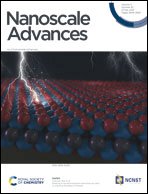
Nanoscale Advances
Transforming Ideas into Nanoscale Innovations.Nanoscale Advances, published by the Royal Society of Chemistry, stands out as a leading open-access journal dedicated to advancing the field of nanoscience and nanotechnology since its inception in 2018. With a specialized focus on areas such as atomic and molecular physics, bioengineering, chemistry, and materials science, this journal has consistently achieved top-tier rankings across several categories, reflecting its high-impact contribution to research and innovation. Currently classified in the Q1 quartile for both Atomic and Molecular Physics and Chemistry (Miscellaneous), and Q2 for Bioengineering, its prestige is underscored by impressive Scopus rankings, including a notable 34th position in General Engineering. With its commitment to disseminating high-quality research, Nanoscale Advances serves as an invaluable resource for researchers, professionals, and students alike, fostering collaboration and scholarly exchange in the rapidly evolving landscape of nanotechnology.
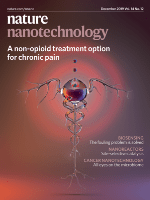
Nature Nanotechnology
Bridging Disciplines for a Nanotech Revolution.Nature Nanotechnology, published by NATURE PORTFOLIO, stands at the forefront of scientific innovation, focusing on the rapidly evolving field of nanoscience and nanotechnology. With an impressive impact factor and ranking in the top Q1 quartiles across multiple disciplines—including Atomic and Molecular Physics, Bioengineering, and Materials Science—this journal is a pivotal resource for researchers and professionals dedicated to advancing knowledge and applications at the nanoscale. Its diverse scope encompasses cutting-edge research that bridges disciplines, addressing critical challenges in engineering, physics, and biomedical fields. Although the journal currently does not offer an open-access option, readers can access a wealth of information that is vital for anyone involved in pioneering research and development efforts. With its robust editorial standards and a commitment to publishing high-caliber, groundbreaking work, Nature Nanotechnology serves as an indispensable platform for the dissemination of transformative ideas that will shape the future of technology and science.
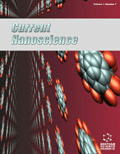
Current Nanoscience
Connecting Disciplines Through Nanoscience InnovationCurrent Nanoscience is a prominent journal published by Bentham Science Publishers Ltd, dedicated to advancing the field of nanoscience through the dissemination of high-quality research and review articles. Since its inception in 2006, the journal has provided a platform for innovative studies across a variety of related disciplines, including bioengineering, biomedical engineering, biotechnology, and nanotechnology, reflecting its diverse scope and interdisciplinary nature. With a Q3 ranking in several categories such as Biomedical Engineering and Pharmaceutical Science and a Scopus percentile ranking around the 60th in its field, Current Nanoscience serves as a vital resource for researchers and professionals seeking to stay abreast of the latest developments and breakthroughs. Although it operates without an open access model, the journal maintains a commitment to enhancing accessibility and relevance in the scientific community. The editorial team is focused on publishing articles that address both theoretical and practical aspects of nanoscience, ensuring that the findings contribute to knowledge and innovation in areas critical to technology and healthcare.
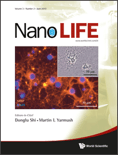
Nano LIFE
Pioneering advancements in bioengineering and nanomedicine.Nano LIFE, published by World Scientific Publishing Company, is a multidisciplinary journal that delves into the dynamic fields of bioengineering, biomedical engineering, and pharmaceutical science, providing a platform for researchers to disseminate their cutting-edge findings. With an ISSN of 1793-9844 and e-ISSN 1793-9852, this journal emphasizes the significance of nanoscale research in healthcare and technology, positioning itself as a vital resource for professionals and academics alike. Although currently categorized in the Q4 quartile for multiple scientific disciplines in 2023, its unique focus on the intersection of nanotechnology and life sciences aims to elevate the discourse in these rapidly evolving sectors. Researchers can anticipate publishing innovative methodologies and results, contributing to the overall understanding and application of nanotechnology in medicine. Located in Singapore, Nano LIFE not only serves the global research community but also reflects the growing interest in nanotechnology across diverse fields.
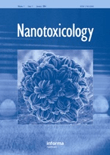
Nanotoxicology
Decoding the Risks of Nanomaterials in Biomedical ScienceNanotoxicology is a pioneering journal published by Taylor & Francis Ltd, dedicated to the critical examination of the toxicity of nanomaterials and their implications in biomedical engineering, nanoscience, and toxicology. With an ISSN of 1743-5390 and E-ISSN of 1743-5404, this journal has established itself as a significant player in its field since its inception in 2007. Classified within the Q2 category for 2023 in major categories such as Biomedical Engineering, Nanoscience and Nanotechnology, and Toxicology, it reflects its robust impact across interdisciplinary research. Notably, its Scopus rankings position it in the top percentile, underscoring its influence in pharmacology and toxicology. The journal offers scholars, researchers, and professionals a platform for sharing pioneering studies and reviews, thereby advancing the understanding of nanomaterial interactions with biological systems. Published from the United Kingdom, Nanotoxicology recognizes the growing importance of nanotechnology in health and environmental contexts, making it an essential resource for anyone engaged in this rapidly evolving field.

MATERIALS TECHNOLOGY
Advancing the Frontiers of Materials ScienceMATERIALS TECHNOLOGY is a prestigious academic journal published by Taylor & Francis Ltd, based in the United Kingdom. With an ISSN of 1066-7857 and an E-ISSN of 1753-5557, this journal has established itself as a vital resource in the fields of Condensed Matter Physics, Materials Science, Mechanical Engineering, and Mechanics of Materials, earning a Q2 ranking in multiple categories as of 2023. With a rich publication history that dates back to the early 1970s, it serves as an essential platform for disseminating innovative research and developments in materials technology. Although not available through Open Access, the journal continues to attract contributions from leading researchers, ensuring high-quality articles that advance knowledge in the materials domain. The journal's commitment to excellence is reflected in its notable Scopus rankings, placing it within the 70th to 78th percentiles across several engineering and physics categories. As a vital resource for researchers, professionals, and students alike, MATERIALS TECHNOLOGY plays a critical role in shaping the future of materials science and engineering.

Artificial Cells Nanomedicine and Biotechnology
Bridging Science and Medicine with Cutting-Edge Research.Artificial Cells Nanomedicine and Biotechnology is a prestigious peer-reviewed journal published by TAYLOR & FRANCIS LTD, specializing in the rapidly evolving fields of biomedical engineering, biotechnology, and nanomedicine. Established in 2013 and operating under an open-access model since 2019, the journal aims to bridge the gap between fundamental science and real-world medical applications, showcasing cutting-edge research that advances our understanding of artificial cells and their biotechnological applications. With an impressive impact factor and ranking in the Q2 quartile across various categories, including Biomedical Engineering, Medicine, and Pharmaceutical Sciences, the journal is a leading platform for innovative studies that contribute significantly to the realm of healthcare and therapeutic development. Researchers, professionals, and students alike will find invaluable insights and advancements within its pages, positioning it as a vital resource for those dedicated to pushing the boundaries of science and improving patient outcomes.

Journal of Experimental Nanoscience
Bridging Disciplines through Nanoscientific ResearchThe Journal of Experimental Nanoscience, published by Taylor & Francis Ltd, is an esteemed open-access journal dedicated to advancing the field of nanoscience and its applications across various disciplines. Since its establishment, the journal has aimed to provide a comprehensive platform for researchers and professionals to disseminate innovative findings in nanotechnology, bioengineering, and materials science. With an ISSN of 1745-8080 and E-ISSN of 1745-8099, this journal has been pivotal in promoting high-quality research in its converged years from 2006 to 2024. Recognized for its contributions, it currently holds a Q3 ranking in core categories such as Bioengineering, Biomedical Engineering, Materials Science, and Nanoscience and Nanotechnology. Although its H-index is not specified, its Scopus ranks reflect its growing influence, with notable percentiles in various engineering fields. By offering open access since 2016, the Journal of Experimental Nanoscience enhances the accessibility of vital research to a global audience. Researchers, professionals, and students will find this journal an invaluable resource for staying abreast of the latest advancements and breakthroughs in nanoscience.

Nanomaterials and Nanotechnology
Leading the Charge in Nanotechnology AdvancementsNanomaterials and Nanotechnology is a premier journal published by HINDAWI LTD, dedicated to advancing knowledge in the rapidly evolving fields of nanomaterials and nanoscale applications. Established as an Open Access platform since 2011, the journal aims to disseminate high-quality research that provides insights into nanotechnology's manifold aspects, including biotechnology, ceramics and composites, as well as electrical and electronic engineering. With a compelling impact factor reflected in its robust Scopus rankings—placing it in the 80th percentile in Engineering and the 72nd percentile in Biotechnology—it stands as a key resource for researchers, professionals, and students seeking to stay at the forefront of innovation in materials science. The journal occupies a distinguished position in the academic community, featuring studies that explore the synthesis, characterization, and application of nanomaterials, thereby contributing significantly to scientific discourse and technological advancement in this critical area.